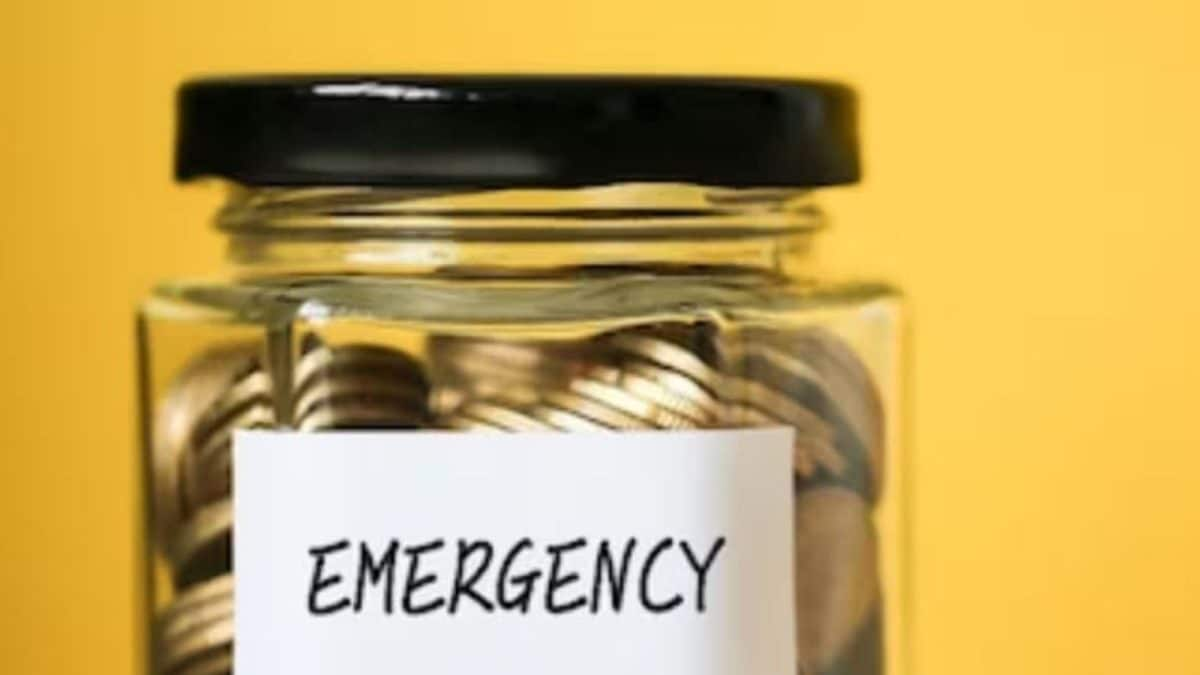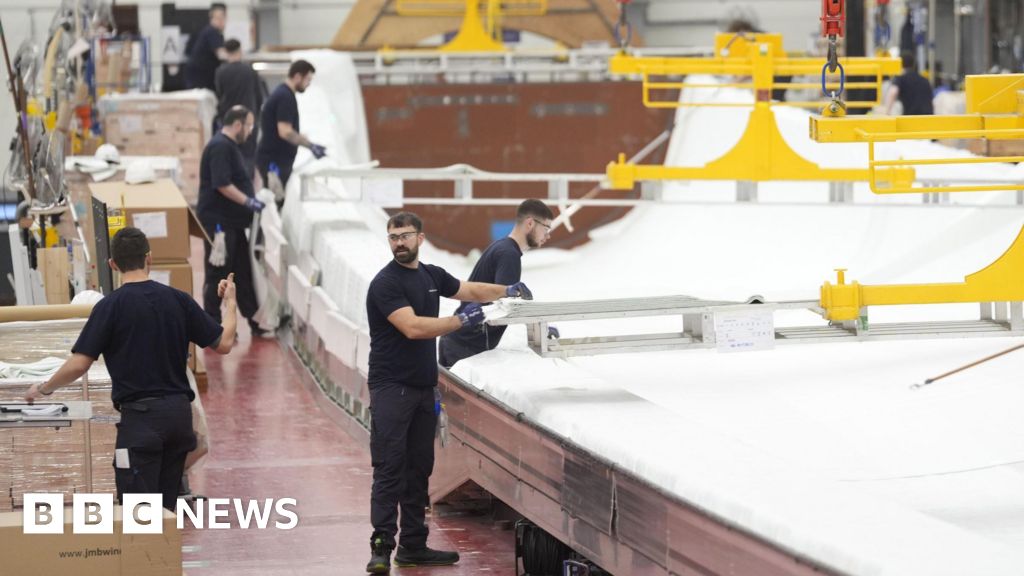Business
Lesson from China’s export restrictions: India eyes fertilizer plant project in Russia; aim to protect against supply shocks – The Times of India

Indian fertiliser companies are preparing to set up a urea manufacturing facility in Russia, a move that is likely to be announced during Russian President Vladimir Putin’s visit to India in December. This would be India’s first fertiliser venture in Russia.The plant will use Russia’s abundant ammonia and natural gas reserves, ensuring a stable supply of this key agricultural input and reducing India’s reliance on volatile global prices, according to a report by ET.State-owned Rashtriya Chemicals and Fertilisers (RCF) and National Fertilisers Ltd (NFL), along with government-backed Indian Potash Ltd (IPL), have signed a non-disclosure agreement (NDA) with Russian partners to begin planning the project, the report said.The plant is expected to produce over 2 million tonnes of urea annually. Negotiations are ongoing on land allocation, natural gas, ammonia pricing and transportation logistics.India depends largely on imports of raw materials like ammonia and natural gas for its domestic fertilizer production.The Russian facility is expected to shield India from future price shocks and supply disruptions. It will also strengthen economic ties between the two countries, which already collaborate in energy, defence and agribusiness.The project comes after India faced an acute fertiliser shortage during this year’s kharif (monsoon) season, when China temporarily halted exports of urea and other nutrients.The disruption forced India to seek supplies from other markets at higher costs, raising concerns about food production.Demand for fertilizers has gone up due to well-distributed monsoon rains. Consequently, nutrient-rich crops like maize are being grown by farmers.During the winter season, the need for urea increases even further for rabi crops such as wheat.In order to keep fertilisers accessible and affordable for farmers, they are regulated and subsidised in India, contributing to food security. The burden of government subsidies rises as global prices rise.The initial budget of Rs 1.68 lakh crore was increased to Rs 1.92 lakh crore for FY25 for the Department of Fertilisers. India’s domestic urea production hit a record 31.4 million tonnes in FY24.Despite these efforts, India still relies heavily on imports for raw materials and is the second-largest user as well as the third-largest producer of fertilizers globally.
Business
How To Create An Emergency Fund To Secure Your Family During Tough Times

Last Updated:
Bank customers and investors in India can safeguard a portion of their regular income in accessible and beneficial emergency fund options.

Where should you maintain an emergency fund? (Representative Image)
An emergency fund is the financial cushion you require during stressful and uncertain times to sustain your existing livelihood and safeguard your family’s needs and interests. In India, due to rising inflation and other economic challenges, low-income and middle-class citizens are often just a medical bill or job loss away from facing poverty. An emergency fund helps you shield against such unforeseen events, helping you stay afloat despite paying for medical coverage and riding the wave during unemployment days.
Fortunately, bank customers and investors in India have the option to safeguard a portion of their regular income in accessible and beneficial emergency fund options such as savings accounts, fixed deposits and post office schemes. Here is what you should know before determining the best option among the three for yourself.
Saving Accounts: Easy Access But Moderate Interest
Holding a savings account gives you easy access to your bank balance while earning moderate interest on the savings. Bank customers having a savings account can undergo the fastest transactions and fund transfers during emergencies using UPI, debit card and ATM facilities. While the interest earned on maintaining a savings account is quite low, customers also enjoy easy liquidity and a clean audit trail. However, you should keep track of the minimum balance rules during heavy withdrawals and you can also opt for a sweep-in facility provided by certain banks, where the surplus automatically moves into short-term deposits.
Fixed Deposits: Safety Plus Predictable Returns
Fixed Deposit is a financial instrument offered by the bank where customers can deposit a lump sum amount for a predetermined period at a fixed interest rate. FDs are known for their low risk value and predictable returns, making them a highly attractive option for those looking to ensure coverage during uncertain periods of life in the near future. But while safe and beneficial, FDs don’t provide easy access or liquidity. Premature withdrawal is only allowed after paying a small penalty or signing up for lower interest.
Post Office Scheme: Govt’s Safety, Workable Access
For those looking to maintain an emergency fund via a post office savings account or schemes, the government of India provides safety for the sum assured, stability on interest and multiple tax benefits. The accessibility and liquidity are also usually great, with account holders able to access their funds and make quick transactions during tough times. They also enjoy tax benefits on different schemes and quarterly interest payout.
A team of writers and reporters decodes vast terms of personal finance and making money matters simpler for you. From latest initial public offerings (IPOs) in the market to best investment options, we cover al…Read More
A team of writers and reporters decodes vast terms of personal finance and making money matters simpler for you. From latest initial public offerings (IPOs) in the market to best investment options, we cover al… Read More
Delhi, India, India
October 25, 2025, 07:47 IST
Read More
Business
Chancellor declines to rule out income tax hike – reports

Rachel Reeves has declined to rule out raising income tax at next month’s Budget, according to reports.
The Chancellor has previously insisted that Labour’s manifesto commitment not to raise income tax, national insurance or VAT “stands” when questioned about how she will bridge a fiscal black hole in November.
But asked about reports the Treasury was considering an income tax hike, the BBC said Ms Reeves told reporters on Friday she would “continue to support working people by keeping their taxes as low as possible” but was still “going through the process” of writing the Budget.
The Chancellor said: “Although I can’t talk about individual measures at this stage, I understand that the cost of living is still people’s number one concern.”
Ms Reeves is widely expected to use the Budget to increase taxes once again, with the Institute for Fiscal Studies estimating she needs to find £22 billion of tax rises or spending cuts to meet her self-imposed fiscal rule.
The gap comes as a result of higher borrowing costs, weak growth and an expected downgrade to official productivity forecasts, although recent better-than-expected inflation figures have eased the pressure slightly.
Raising the basic rate of income tax by 1p could raise around £8 billion, but would break a clear manifesto pledge.
It would also be the first time the basic rate has been increased since the 1970s.
The Chancellor is also reported to be considering cutting the amount of money people can save in cash Isas as part of a drive to encourage investment in stocks and shares.
It is understood that no decision has yet been made and several options are being considered, including halving the allowance from £20,000 to £10,000.
Treasury minister Lucy Rigby told the Telegraph the Government was “looking at the right balance between cash and shares in the Isa”.
She said: “The bottom line is, we want people to be better off and one way we can do that is to build a shareholding democracy in this country.”
Meanwhile, The Times reported that the Chancellor would use the Budget to increase the minimum wage once again, and make further moves towards abolishing lower minimum wage rates for younger people.
Business
Social security benefits to rise 2.8%: Retirees to see $56 monthly boost; senior citizens say increase not enough – The Times of India

The Social Security administration on Friday announced that its benefits will increase by 2.8% in 2026, giving retirees an average monthly boost of more than $56. The rise reflects moderating inflation after several years of higher cost-of-living adjustments (COLA).The increase will take effect in January for nearly 71 million Social Security recipients, while about 7.5 million people receiving Supplemental Security Income will see higher payments starting December 31.The announcement, which was scheduled for last week, was delayed due to the US federal government shutdown.Recipients saw a 2.5% increase in 2025 and a 3.2% rise in 2024, following a historic 8.7% jump in 2023 driven by record-high inflation. The COLA is funded by payroll taxes collected from workers and employers, up to an annual salary cap that will rise to $184,500 in 2026 from $176,100 in 2025.Social Security Administration Commissioner Frank Bisignano said in a statement that the annual adjustment “is one way we are working to make sure benefits reflect today’s economic realities and continue to provide a foundation of security.” However, many seniors believe the increase won’t be enough to meet rising living costs, reported AP.Polling from AARP shows that many older Americans share that concern. Only 22% of Americans over 50 believe a COLA of around 3% is enough to keep up with inflation, while 77% disagree. According to the MIT Living Wage Calculator, a single adult living in Florence, South Carolina, spends about $10,184 annually on housing, $3,053 on medical expenses and $3,839 on food.Emerson Sprick, director of retirement and labor policy at the Bipartisan Policy Center, said in a statement that cost-of-living increases “can’t solve all the financial challenges households face or all the shortcomings of the program.”The latest adjustment comes as the Social Security Administration faces internal challenges and uncertainty about the program’s long-term future. In July, Treasury Secretary Scott Bessent said the Republican administration was committed to protecting Social Security, hours after comments suggesting that a new children’s savings program signed by President Donald Trump was “a back door for privatising Social Security,” as quoted by AP.
-

 Tech1 week ago
Tech1 week agoWhy the F5 Hack Created an ‘Imminent Threat’ for Thousands of Networks
-

 Tech6 days ago
Tech6 days agoHow to Protect Yourself Against Getting Locked Out of Your Cloud Accounts
-

 Business6 days ago
Business6 days agoGovernment vows to create 400,000 jobs in clean energy sector
-

 Sports1 week ago
Sports1 week agoU.S. Soccer recommends extending NCAA season
-

 Tech7 days ago
Tech7 days agoI Tested Over 40 Heat Protectant Sprays to Find the Best of the Best
-

 Sports7 days ago
Sports7 days agoPCB confirms Tri-nation T20 series to go ahead despite Afghanistan’s withdrawal – SUCH TV
-

 Tech1 week ago
Tech1 week agoSpit On, Sworn At, and Undeterred: What It’s Like to Own a Cybertruck
-

 Tech7 days ago
Tech7 days agoThe Best Part of Audien’s Atom X Hearing Aids Is the Helpful, High-Tech Case








